
Growing Cranberries
Seasonal Work
Every season presents new challenges for growers. Here is a summary of the work performed on a cranberry farm throughout the year.
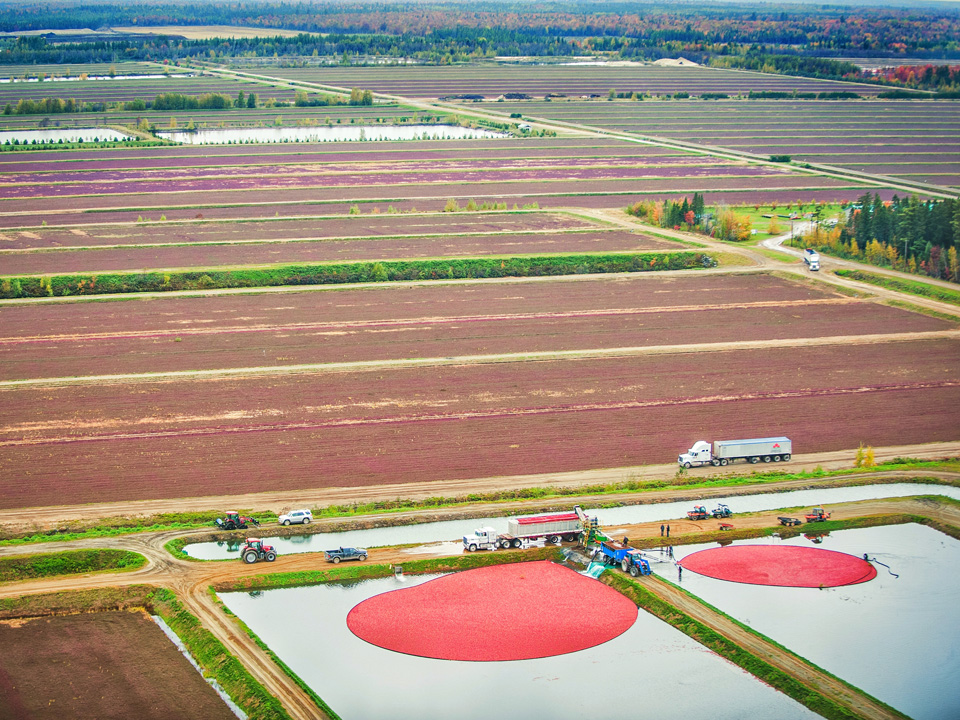
Cranberries: a perennial crop
Cranberries are indigenous plants in the Ericaceae family. They are perennial and grow in soil that is low in phosphorus. The plants have a very long life cycle and in the United States some plants are over a hundred years old.
Today, we grow cranberries in sandy soil which allows for better drainage. It takes three years from planting to have a true cranberry harvest. Bog maturity is reached after five years. The plant is a running vine and forms stolons (runners) that flower at the beginning of the summer and then create fruit. Fruit arrives at maturity towards the end of September or beginning of October and the harvest begins afterwards. Stolons can reach up to 30 cm in height and form buds in the fall, which makes protecting the plants from the harsh winter cold of utmost importance.
Winter

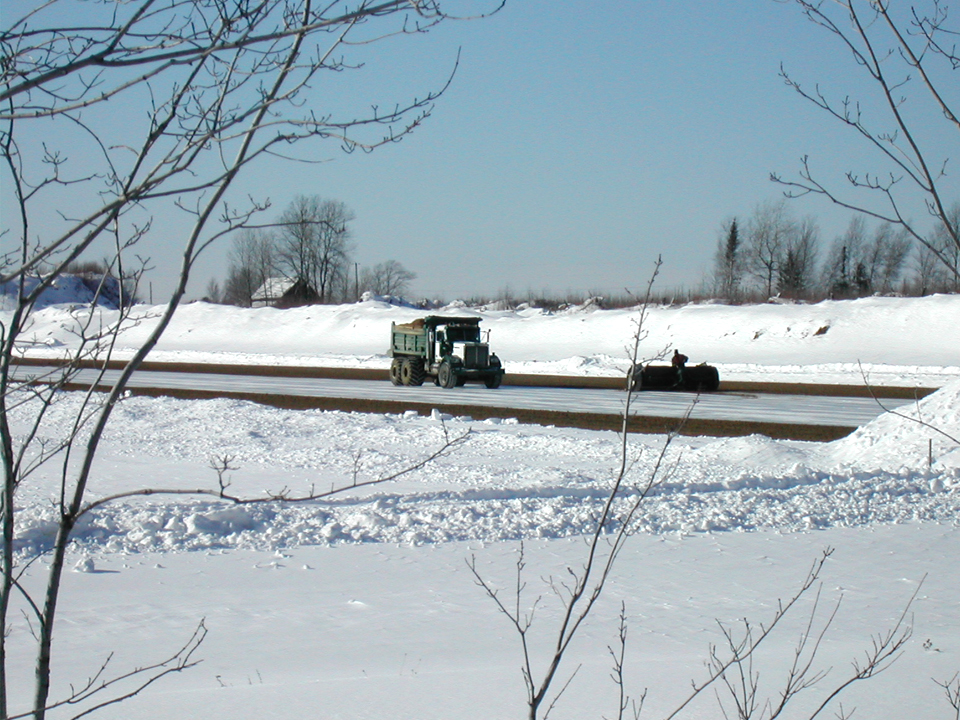
When temperatures reach an average of - 8 °C, it is necessary to protect the buds that have already formed for the next season. Around the middle of December, it is the glaciation period which consists of flooding the bogs to cover the plants with a coat of ice about 6-inches thick to protect the plants from the harsh cold and periods of freezing and thawing that have become increasingly frequent.
Every three or four years, growers undertake a process called sanding which consists of spreading a thin layer of sand across the fields. When the snow melts, the sandy falls into the soil and its nutrients regenerate the plant. Sanding also helps to control weeds and harmful insects. This growing practice is generally done between January and March.
Spring

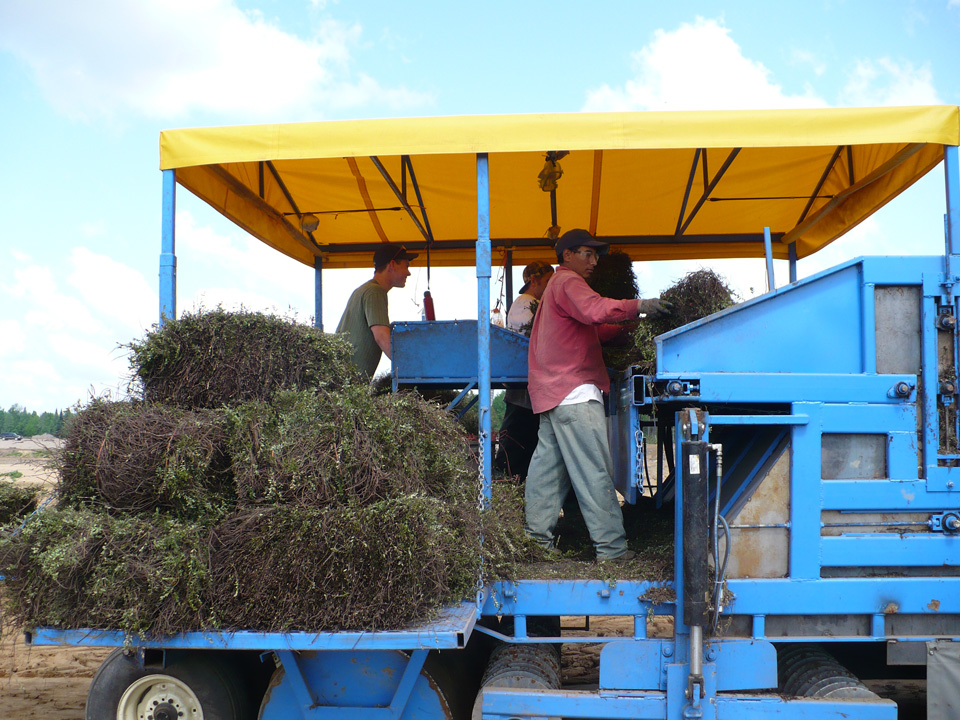
With the arrival of spring, water is withdrawn from the fields and stored in the reservoirs. Sprinklers are reinstalled allowing to spray the plants for frost protection that is still frequently necessary during this season. The buds and flowers can be gravely affected by spring frosts: bud mortality and loss of flowers. Spring flooding can also have a beneficial impact for integrated pest management (IPM) for insects destructive to cranberries.
During the months of May and June, growers fertilize their fields to obtain the correct pH. Following the advice of their agronomists, they apply doses of various fertilizers to ensure the proper development of the cranberry plants. Fertilizers (nitrogen, phosphorus, potassium, sulfur, magnesium, copper) are spread to ensure the soil is optimal for crop growth. As needed, cranberry plants may be pruned. Integrated pest management of weeds and insects is also undertaking during the course of the season.
Today, nearly all growing areas dedicated to cranberry production are subject to weekly fertilization and insect scouting to minimize fertilization applications and pesticide use to reduce their environmental impact. The use of sexual pheromones and beneficial insects are some of the methods used by growers to fight destructive pests.
Summer

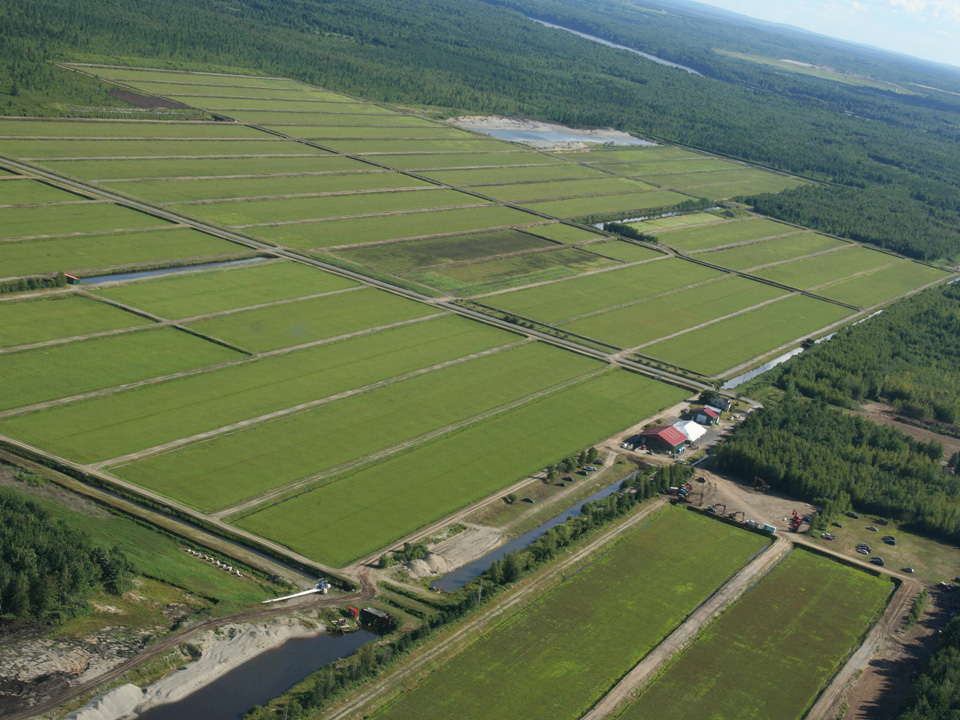
Early in summer, buds transform into beautiful pink flowers. This is when the pollination period begins. The presence of bees is of great importance to transport the pollen from one flower to another, thus creating fertilized flowers and eventually, fruit. The more flowers that are pollinated, the more fruits will form.
Summer is also conducive for insects and weeds, making regular scouting necessary to follow insect evolution. In organic farming, hand weeding is necessary to eradicate weeds.
Good drainage and irrigation are essential to ensure plants continue their optimal growth. Generally speaking, natural rain meets the needs of cranberry plants. Though cranberries do not grow in water, they do need some to encourage growth. Timed sprinkling is planned to prevent drying. We must highlight that water comes from reservoirs or lakes on the farm site.
Autumn

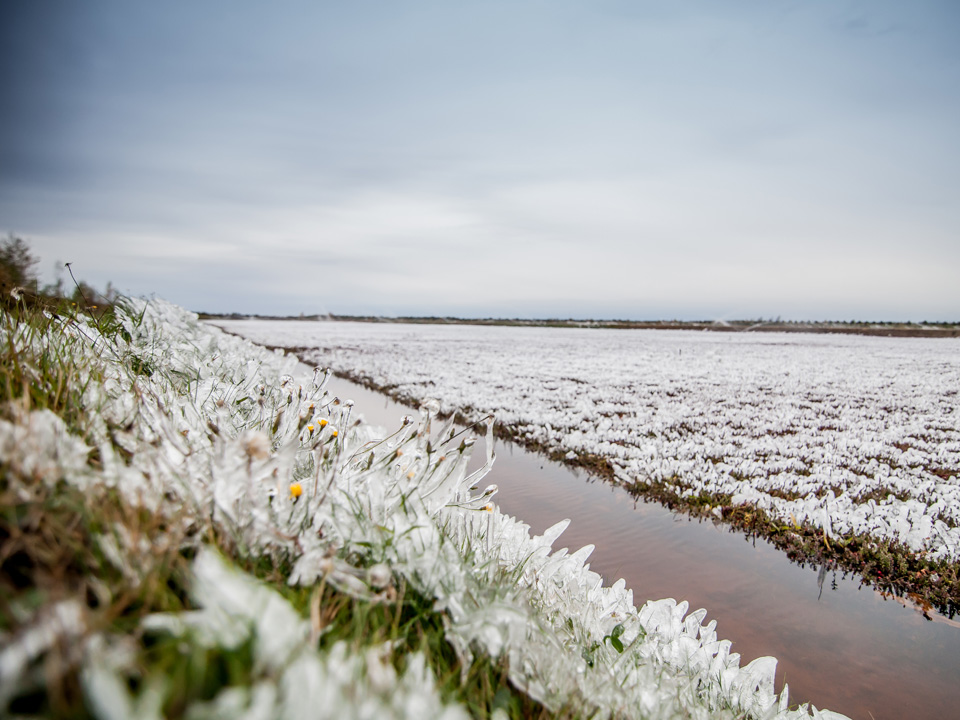
Fruits change from white to red, reaching a beautiful bright red colour. As the berries mature, the sugar and anthocyanin levels increase, making them more resistant to the cold. However, they cannot tolerate temperatures lower than– 4 °C. Frequent sprinkling during this period helps protect the fruit from frost.
The cranberry harvest period usually takes place between the end of September and the end of October. Cool nights and sunny days are perfect to help ripen the fruit and increase the colouration. Some cranberry varieties are earlier and are ready in the beginning of September. For the past few years, growers have been introducing these varieties into their bogs.
Cranberry Harvest

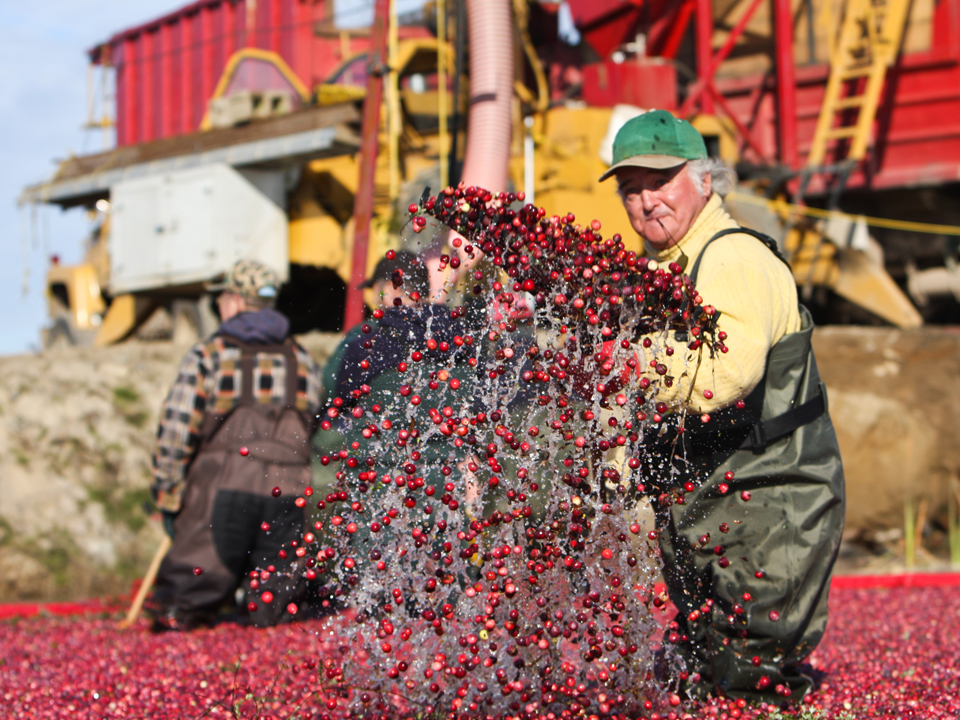
The cranberry harvest is performed by flooding the bogs, one after another. A harvester is used to detach the fruit from the mother plant. Because they are equipped with 4 air pockets, cranberries float and descend by gravity to one end of the bog depending on the wind direction. With the help of booms, workers corral the little red berries around a fruit pump that sucks them up and deposits them into waiting trucks. They are then transported to handling facilities where the cranberries are packed for the fresh fruit market or store in freezer units for future transformation into juice, dried fruit, powder, concentrate or other products.
When the harvest is completed, water is returned to the reservoirs for future use.
